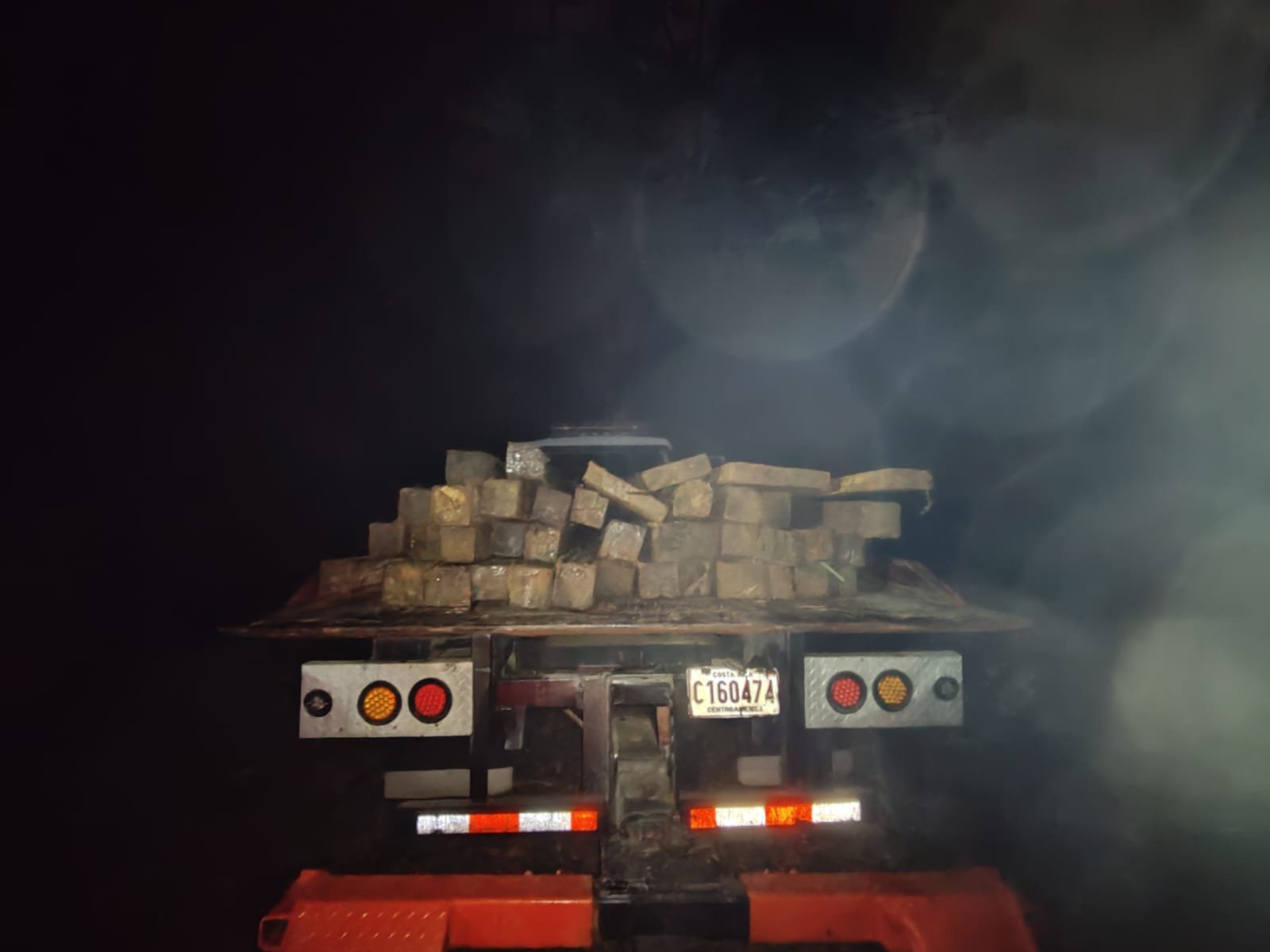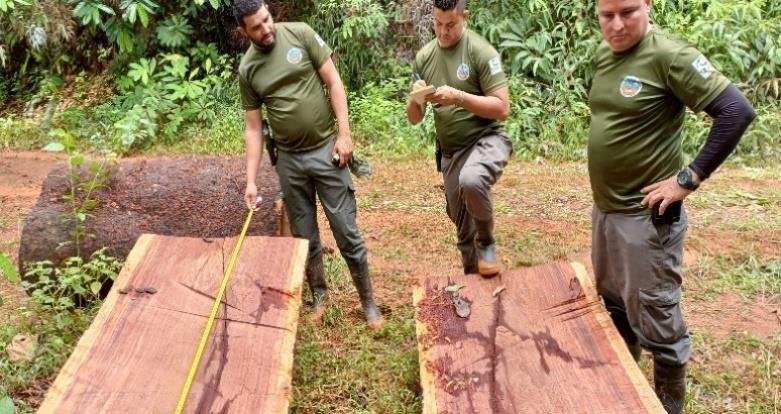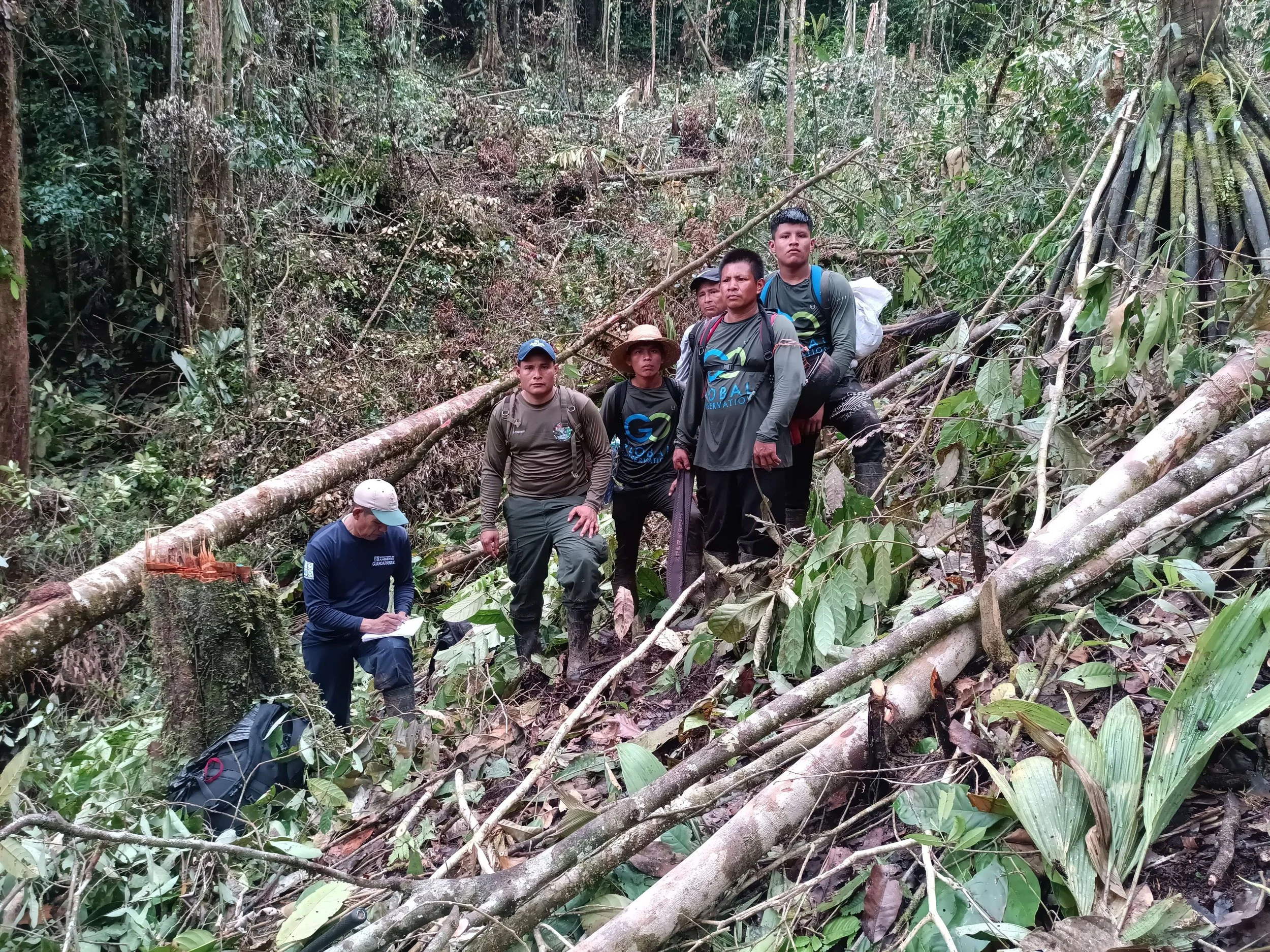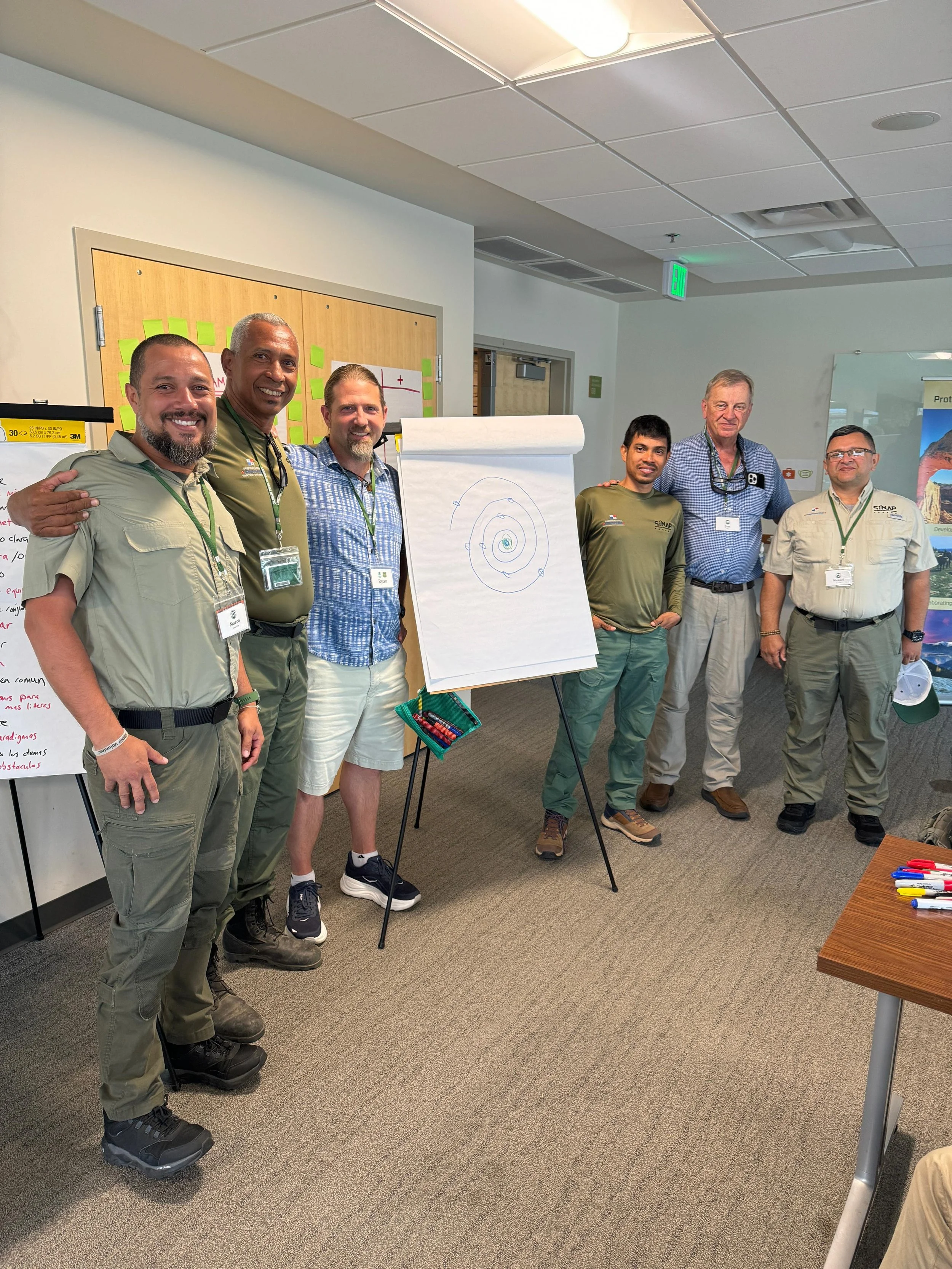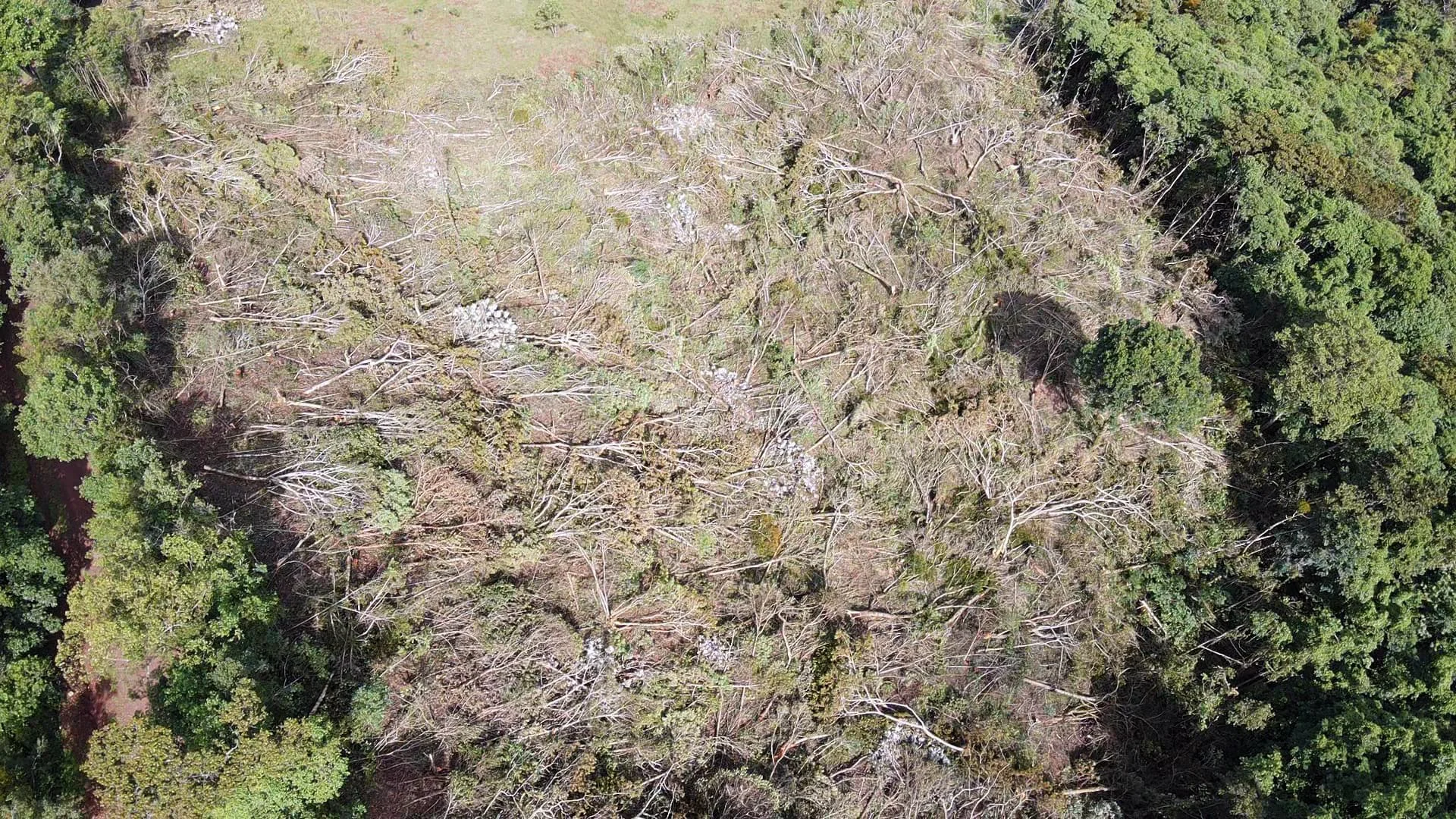Corcovado, Costa Rica—2025 First Quarter Report
Corcovado Park Rangers have been responsible for for a number of confiscations and arrests within the park.
INTRODUCTION
This report summarizes key conservation efforts implemented by Global Conservation's Global Park Defense (GPD) in collaboration with SINAC across Costa Rica’s protected areas, including Corcovado National Park (PNC), Guanacaste Conservation Area (ACG), La Amistad International Park (PILA), and Golfo Dulce Forest Reserve (RFGD), during the first quarter of 2025.
KEY ACHIEVEMENTS
• Conducted 214 control and protection operations.
• Seized natural resources valued at over USD $228,000.
• Patrolled 19,100 km terrestrially and 1,200 km by sea.
• Addressed 143 environmental complaints.
Corcovado National Park
During the first quarter of 2025, Corcovado National Park (PNC) stood out as the area with the highest number of operational interventions under the Global Park Defense Program. The park conducted a total of 95 environmental control and protection operations, focusing on addressing illegal activities reported by citizens and detected through patrolling.
Despite lacking aquatic patrol coverage, institutional patrols in Corcovado reached 1,500 hours, complemented by 80 hours contributed by community rangers. These combined efforts resulted in the confiscation of 9.42 cubic meters of timber and two different tree species. Additionally, one firearm was seized, reducing the threat posed by armed poachers.
Map of actions for the prevention, protection, and control program of Corcovado National Park.
Wildlife protection efforts led to the rescue of nine individual animals, highlighting the ongoing issue of illegal wildlife trafficking in the area. Authorities also managed the detention or citation of nine individuals for various environmental offenses. Citizen engagement played a critical role, with 95 environmental complaints addressed, of which 35 were escalated to the Public Prosecutor’s Office for legal proceedings.
The total economic value of the resources seized in Corcovado was estimated at $42,674, representing a significant contribution to preventing environmental damage and reinforcing the park’s conservation objectives.
Guanacaste Conservation Area
The detention of individuals occurred in the Guanacaste Conservation Area (ACG). The image shows several individuals detained by ACG officials during a surveillance operation in the protected area. The individuals were caught engaging in illegal activities, allegedly related to hunting or the extraction of natural resources. The intervention was carried out in coordination with the Border Police as part of efforts to guarantee the integrity of the region's natural heritage.
Control and Surveillance Actions
1. The program implemented various strategies to ensure the protection of the area: Control and surveillance operations. In this first quarter, 18 operations were carried out. These included land, water, and aerial patrols; inspections at critical points such as sawmills and control posts; as well as responses to early warnings.
2. Land Patrols—A total of 1,600 linear kilometers have been covered in land surveillance within the protected area.
3. Aquatic Patrols: 1,200 linear kilometers of aquatic ecosystems have been covered, ensuring the protection of marine species and preventing illegal activities such as illegal fishing. 4. Seized weapons: 4 firearms have been confiscated.
5. Wildlife rescue: In previous operations, various protected species have been rescued, including yellow-naped parrots, monkeys, peccaries, a tortoise, a sloth, a boa constrictor, and other animals.
Environmental complaints and legal actions: 5 complaints have been processed. - Complaints filed with the prosecutor's office: 4 complaints have been processed. - Economic value of confiscated resources: $8,080 in confiscations of natural resources have been recorded.
Photo 1: Confiscation of illegally extracted turtle eggs: This type of activity poses a serious threat to the conservation of endangered marine species, such as the olive ridley turtles. The extraction and commercialization of eggs jeopardize the survival of future generations and undermine conservation efforts. The protection team's timely intervention prevented these eggs from entering the illegal market. The Golfo Dulce is a crucial area for several species of sea turtles, especially the hawksbill and green turtles, which use it for feeding and, in the case of the hawksbill, also for nesting.
Photo 2: A pair of Orange-chinned Parakeets recovered during operations against the illegal wildlife trade. This species, endemic to certain areas of Costa Rica, is a frequent victim of illegal commerce due to its striking plumage and social behavior. The birds were transferred to a specialized center for veterinary evaluation and eventual reintroduction into their natural habitat.
The image shows a shot captured by the SPI Infrared X20 camera recently installed in a strategic area of the ACG. This advanced technology enables nighttime surveillance and highly accurate motion detection, facilitating the monitoring of illegal activities and the study of wildlife. Its implementation strengthens control and conservation efforts in hard-to-reach areas.
Forest Fire Prevention
Forest fire management is a priority within the ACG. Daily prevention actions include:
- Constant monitoring of critical points with the support of technology and patrols. - Training and awareness-raising for communities on responsible fire management. - Coordination with specialized brigades for rapid emergency response.
- Removal of combustible material in strategic areas to reduce the spread of fires.
- Use of radar and other surveillance systems to detect fire outbreaks at an early stage. Thanks to these strategies, the impact of fires has decreased significantly compared to previous years. We identified and responded to 35 wildfires in 2024, which affected 1,193.48 hectares. In 2025, one incident was recorded, affecting 0.02 hectares, demonstrating a significant reduction in the fire's impact on the ecosystem. As a follow-up and implementation process, we are installing an SPI Infrared X20 Camera for Monitoring Protected Areas of the ACG.
As part of the surveillance effort at the ACG, an SPI Infrared X20 camera is installed, mounted at a height of approximately 30 meters. This system will allow for advanced and continuous monitoring of critical areas, ensuring early detection of environmental anomalies, including forest fires and illegal activities within the protected area. The integration of this technology optimizes remote monitoring and secure access to real-time images, complementing established land and water patrols.
The proposed system incorporates virtual private networks (VPNs) for secure data transmission, along with communication redundancy via 3G/4G networks, ensuring connectivity even in adverse situations. It also features power failure detection mechanisms that allow for controlled shutdown in the event of prolonged power outages, ensuring the equipment's operability. Its API compatibility enables seamless integration with other applications used for alert management and infrastructure control, aligning with modern environmental monitoring standards.
Efforts in prevention, protection, and control have yielded significant progress in the conservation of the ACG. The decrease in fires and seizures of illegal resources suggests greater effectiveness in environmental monitoring. However, it is essential to continue strengthening community participation and improving coordination with local entities to optimize results.
La Amistad International Park
La Amistad International Park staff conducted an inspection in response to a report of illegal logging within the protected area. This action is part of forest monitoring and control efforts aimed at preventing ecosystem degradation and ensuring the conservation of natural resources. The observation of unauthorized tree removal significantly impacts the forest cover, species habitat, and ecological balance of the site.
During a control operation in a protected area, officials confiscated a firearm for its use in illegal hunting activities.
Officials also dismantled a thatched roof found during a patrol. These structures, commonly used for illegal activities such as hunting, logging, and illegal tourism, are being removed to prevent their reuse and reaffirm the protection of the wilderness area. This action is part of the active surveillance and defense strategies for natural heritage.
A total of 70 Prevention, Protection, and Control activities were carried out in the PILA and its Buffer Zone. Support was provided to other offices in the La Amistad Pacifico Conservation Area to address complaints received through SITADA (National Sight and Protection Agency).
Environmental festivals were held in the Indigenous territories of Ujarras, Salitre, and Buenos Aires to raise environmental awareness among the population, focusing on forest fire prevention. A forest fire that endangered the Las Tablas Protected Zone in the Progreso sector was addressed. The team worked together with the Indigenous Resource Guards of the Indigenous territories of the Canton of Buenos Aires, as well as security guards and law enforcement.
In addition to PPC work, PILA staff carried out maintenance, deployed personnel, conducted environmental education and community management activities and meetings, provided tourism assistance, and maintained and monitored the posts.
Golfo Dulce Forest Reserve—Corcovado Buffer Zone
The following images illustrate the illegal hunting that occurs within the reserve. Unfortunately, these environmental crimes often employ hunting dogs to secure their targets. The first photo shows the dog with its prey, a peccary known as Pecari tajacu.
The activities focused primarily on addressing complaints filed by citizens and requests for extensions from the Environmental Prosecutor's Office. The activities included conducting patrols, both day and night, to monitor various conflict areas, such as hunting, illegal logging, timber transport, setting up trammel nets in rivers, monitoring wildlife, and inspecting state-owned farms.
A total of 1,354 hours of work was spent, covering 7,500 km of road travel, to reach the various points of attention. These patrols focused primarily on patrols and addressing citizen complaints or reports, which in some cases resulted in reports to the Prosecutor's Office, flagrancy investigations, or investigations by the OIJ (Official Judicial Investigation Agency).
These images show timber seized during a patrol operation in a protected area. The wood was found without proper permits, indicating illegal logging activities. These actions represent a serious environmental offense that contributes to deforestation, habitat loss, and the degradation of ecosystem services. The timely intervention by park rangers prevented further extraction and reinforced efforts to protect forest resources.
31 patrols or tours were conducted, which also included patrols and animal monitoring. In some cases, complaints were received at the patrol stations themselves; others were received through anonymous calls. 30 were responded to. Findings were mainly wood found in stumps, as the wood had already been extracted. 185 red mayo boards and five manu logs, a boat with some fishing gear, three chainsaws, a frame, a backhoe, a grasshopper with its loading shovel and cart, and a vehicle used to transport wood were brought to the station.
We also found a gun that was used to hunt a wild boar and was left behind when our presence was noticed, along with four hunting dogs; these were returned on orders from the prosecutor. We also rescued and relocated a wild boar, taken to the Garzas Doradas Rescue Center, as well as a wounded toucan. We also identified people who are invading state farms with livestock or agriculture.




















